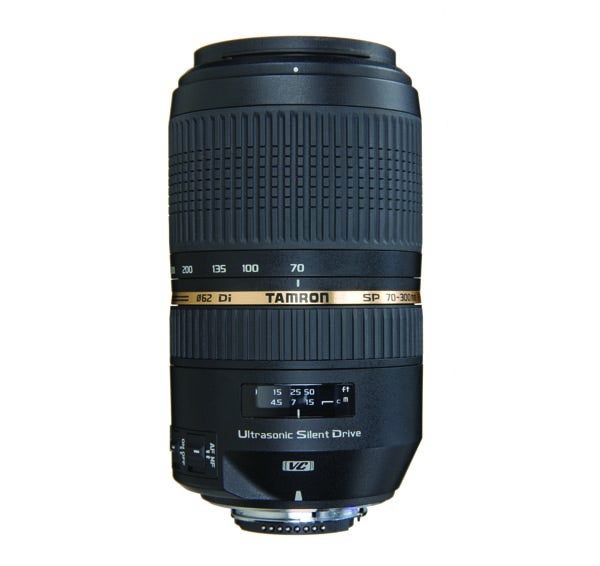Lens Test: Tamron SP 70-300mm f/4-5.6 DIVC USD AF
Sharp, silent and truly steady in the hand.

We may earn revenue from the products available on this page and participate in affiliate programs. Learn more ›
Tailor-made for wildlife and sports shooters, this third-generation 70–300mm full-frame telezoom in Tamron’s SP line adds Vibration Compensation (VC) plus two innovations: an Ultrasonic Silent Drive (USD) focusing motor for near-silent AF, and an element of what Tamron calls XLD glass, a relatively inexpensive low-dispersion glass that the company claims suppresses chromatic aberration as well as fluorite does. About a 105–450mm equivalent on APS-C-bodies, it’s internal-focusing, with full-time manual focusing, a non-rotating lens barrel, and a new anti-flare coating.
Larger and heavier than similar full-frame, stabilized Nikon and Sigma 70–300mm zooms, it’s about the same size as the comparable Canon, though a few ounces heavier. With hood, it extends to slightly over 9 inches.
Attractively finished with a matte-black barrel and gold accents, the Tamron’s amply-sized focus and zoom rings are ribbed, rubberized, and smooth-turning. The AF on our Nikon D3s was fast, sure, and near-silent. And it has very legible, white-on-black focusing scales.
On the optical bench in the Popular Photography Test Lab, SQF tests of sharpness and contrast revealed Excellent-range numbers at 70mm, Very Good at 200mm, and Good at 300mm—about average for this class.
In DxO Analyzer Version 3.2 tests of distortion control, it produced very favorable Imperceptible- and Slight-range distortion, compared with the comparable Canon’s and Nikon’s Slight- and Visible-range showings. (The Tamron and Sigma showed roughly equal distortion control.)
Tamron’s VC also proved itself, giving most testers 4 extra stops of handholdability. This was slightly below the Nikon’s top 4.5 stops, but significantly better than either the Canon or Sigma, which made it only to 2–3 stops. Worth the $50 cost over the Sigma? With its superior stabilization, we say yes.
SPECIFICATIONS:
70–300MM (70.01–301.31mm tested), f/4–5.6 (f/4.00–n.a.* tested), 17 elements in 12 groups. Focus ring turns 200°. Zoom ring turns 90°. Focal lengths marked at 70-, 100-, 135-, 135-, 200, and 300mm.
DIAGONAL VIEW ANGLE: 34–8 degrees
WEIGHT: 1.78 lb FILTER SIZE: 62mm
MOUNTS: Canon AF, Nikon AF, Sony AF
INCLUDED: Lenshood
STREET PRICE: $450
TEST RESULTS:
DISTORTION: At 70mm, 0.08% (Imperceptible) barrel. At 200mm, 0.29% (Slight) pincushion. At 300mm, 0.28% (Slight) pincushion.
LIGHT FALLOFF: At 70mm, gone by f/5. At 200mm, by f/5.6. At 300mm, by f/8.
CLOSE-FOCUSING DISTANCE: 56.5 inches.
MAXIMUM MAGNIFICATION RATIO: At 70mm, 1:15.1. At 200mm, 1:5.27. At 300mm, 1:3.69.
IMAGE STABILIZATION: 4 stops.
